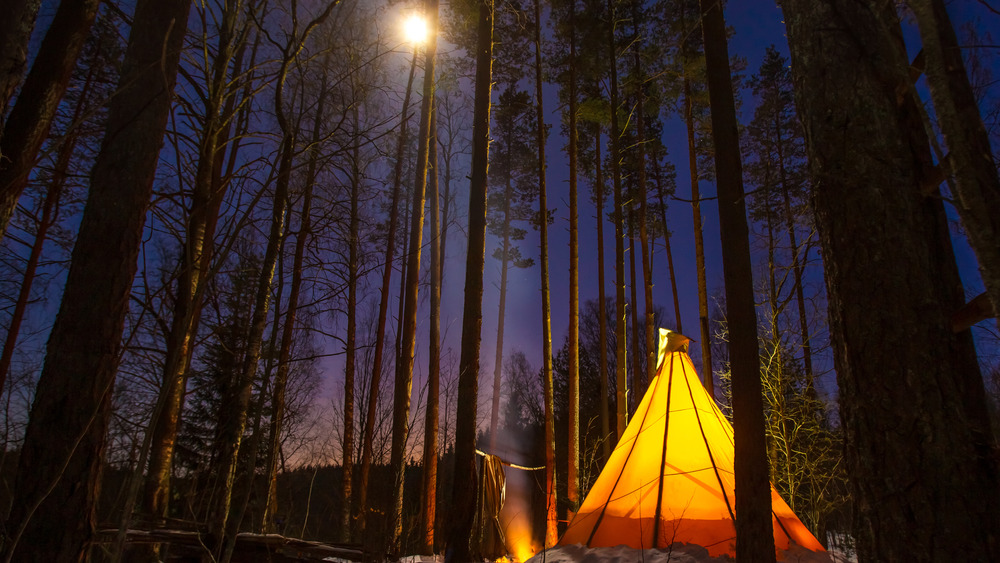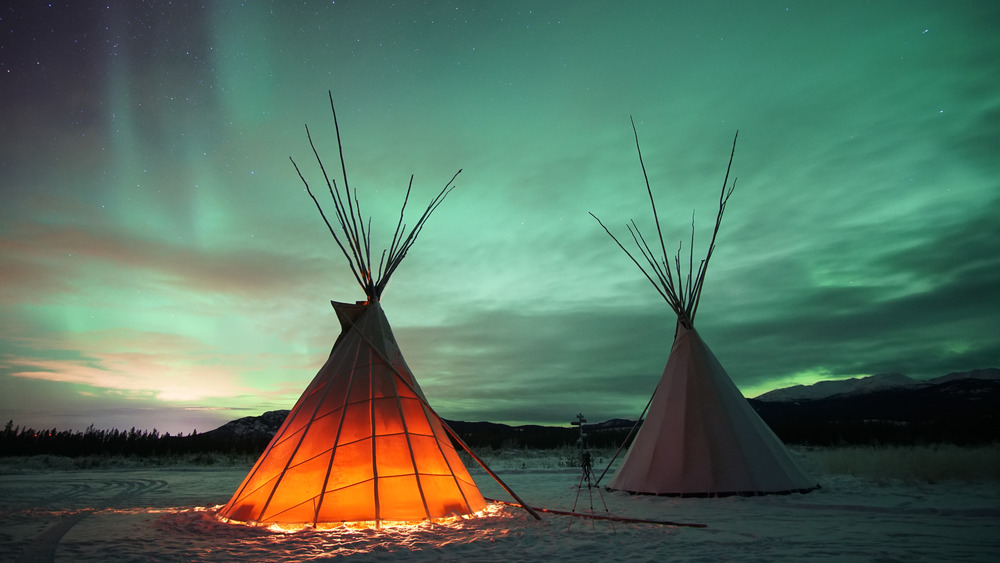What It Was Really Like Living In A Teepee
Ah, the teepee. For most of us, we first encountered the cone-shaped style of home in school, probably as part of a unit on American history. Because of this, we often think of it solely as an icon of the Old West. You can even buy teepee playhouses (via Crate and Barrel) for your kids now. But for many Native American nations, the teepee was much more than a symbol. It represented a kind of freedom. After all, teepees were the first truly mobile homes and are intrinsically connected to the history of horses in this country. Horses meant that Native nations could easily follow herds of buffalo, and the portability of the teepee meant that home could be anywhere you needed it to be.
Now, depending on how granular your history teacher decided to get, you may not know that not all (or even most) tribes used teepees. As Native Languages.org tells us, Native American architecture and home styles are varied and include everything from the adobe construction of the southwest to the northwestern plank houses and Florida chickees and everything in between. Teepee (or tipi, as it's sometimes spelled, says Teepee Joy) were mainly used by the Plains tribes, like the Comanche, Kiowa, and Lipan Apache, says Texas Beyond History. So what's so special about this simple dwelling that it was so widely used among Plains people? It turns out the design and livability of the teepee are pretty ingenious. Let's take a closer look. Imagine yourself living on the North American plains 150 years ago.
Here's what living in a teepee was really like
You depend on hunting buffalo for food and their hide for warmth. You need to be able to follow their herds at a moment's notice. You need room to sleep, to cook, and to gather. A teepee was the ideal answer.
Consider the shape of the structure — specifically, that used by the Cheyenne (via the Chipeta: Ute Peacemaker blog). While we might describe it as cone-shaped from the outside, it was more of an oval inside, and larger front-to-back than side-to-side. Inside, there would be a fire in the middle, where smoke vented through an opening at the top. While most teepees were only big enough for a family, a chief's might be large enough for a dozen (and sometimes more) to sit together while important business was discussed. The buffalo hides used as the de facto walls insulated people from the cold and could be rolled up from the bottom to let air circulate during the summer. Inside you might see gorgeous designs or historic paintings on the hides, as The Tipi Company relates. Later construction methods may have used canvas.
Some tribes would arrange their teepees in a circle, which might be just a few families or could number more than a thousand, as General Custer discovered to his detriment at the Battle of Little Bighorn.
While you're more likely to encounter a teepee these days while glamping, rather than used by any contemporary tribes, the teepee's spirit and inventive design lives on.

